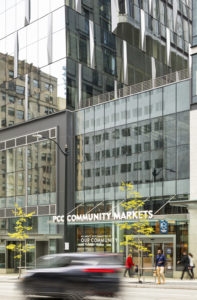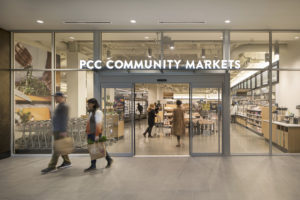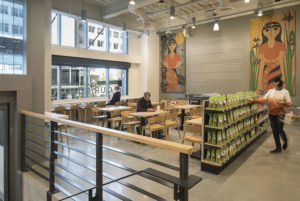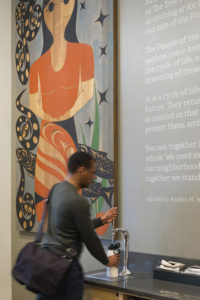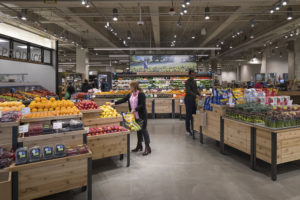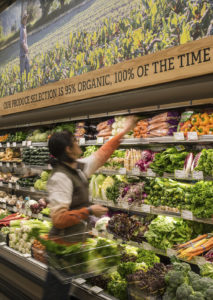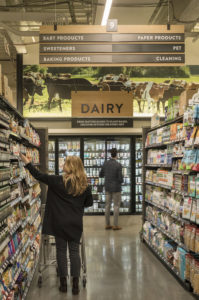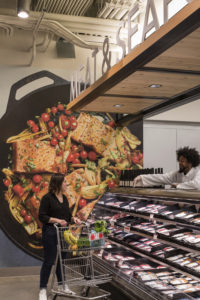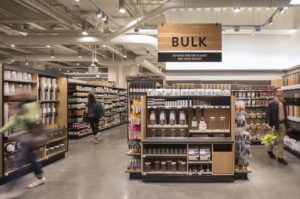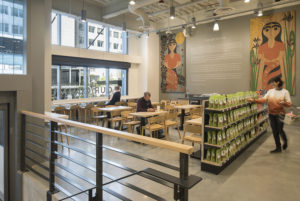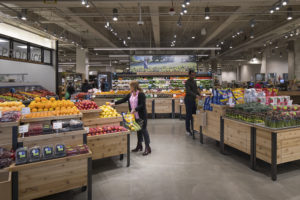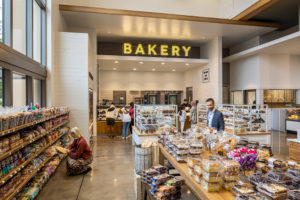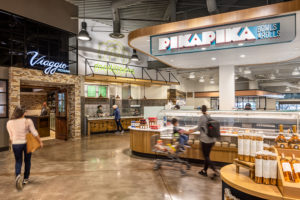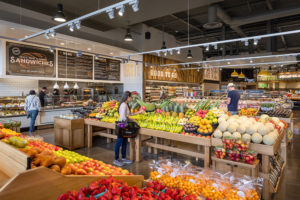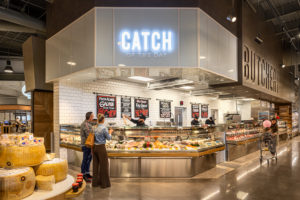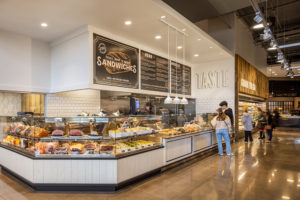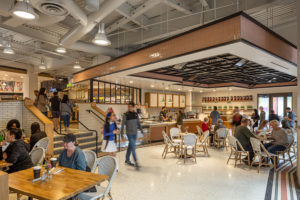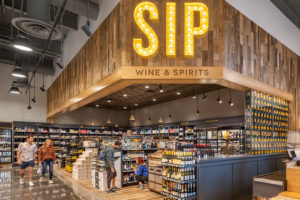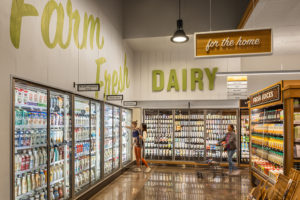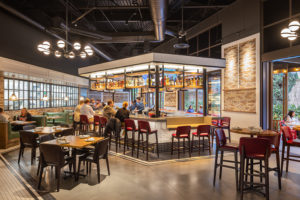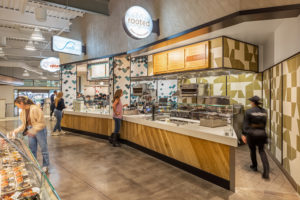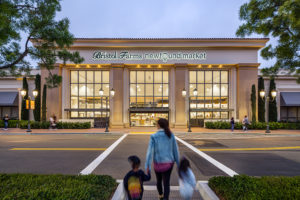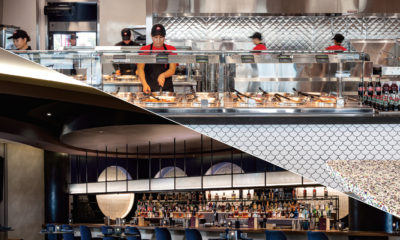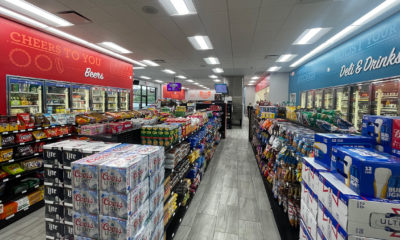EARLIER THIS YEAR, ratings website Yelp issued its first-ever list of the 50 most-loved restaurant, food and retail brands, but just two grocers made the roster: #1 Trader Joe’s (Monrovia, Calif.), and #9 Costco Wholesale (Issaquah, Wash.). Trader Joe’s winning formula, according to consumer feedback on the online ratings site, includes creative private-label food products, Hawaiian-themed decor and accessible prices, while Costco was singled out for bulk discounts and free samples.
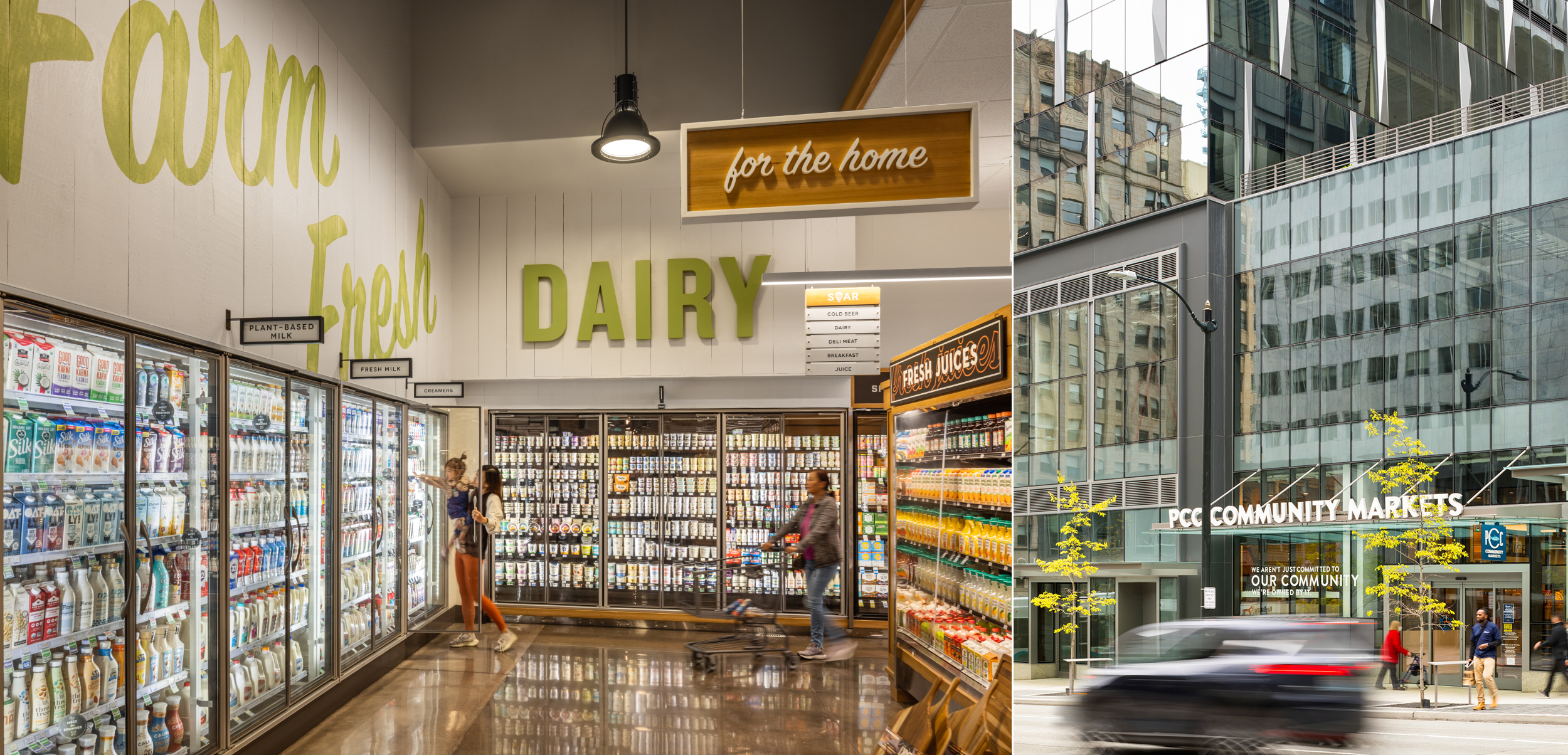
Why the dearth of grocers on the list? Yelp didn’t delve into that subject, but here’s a possible explanation: Too many grocer competitors have stuck to cookie-cutter environments (rows of aisles/shelves/checkout stations) that remain mainly a blur to shoppers.
That’s definitely not the case the two grocery designs detailed below: both consist of imaginative uses of existing spaces to make them stand out from the crowd.
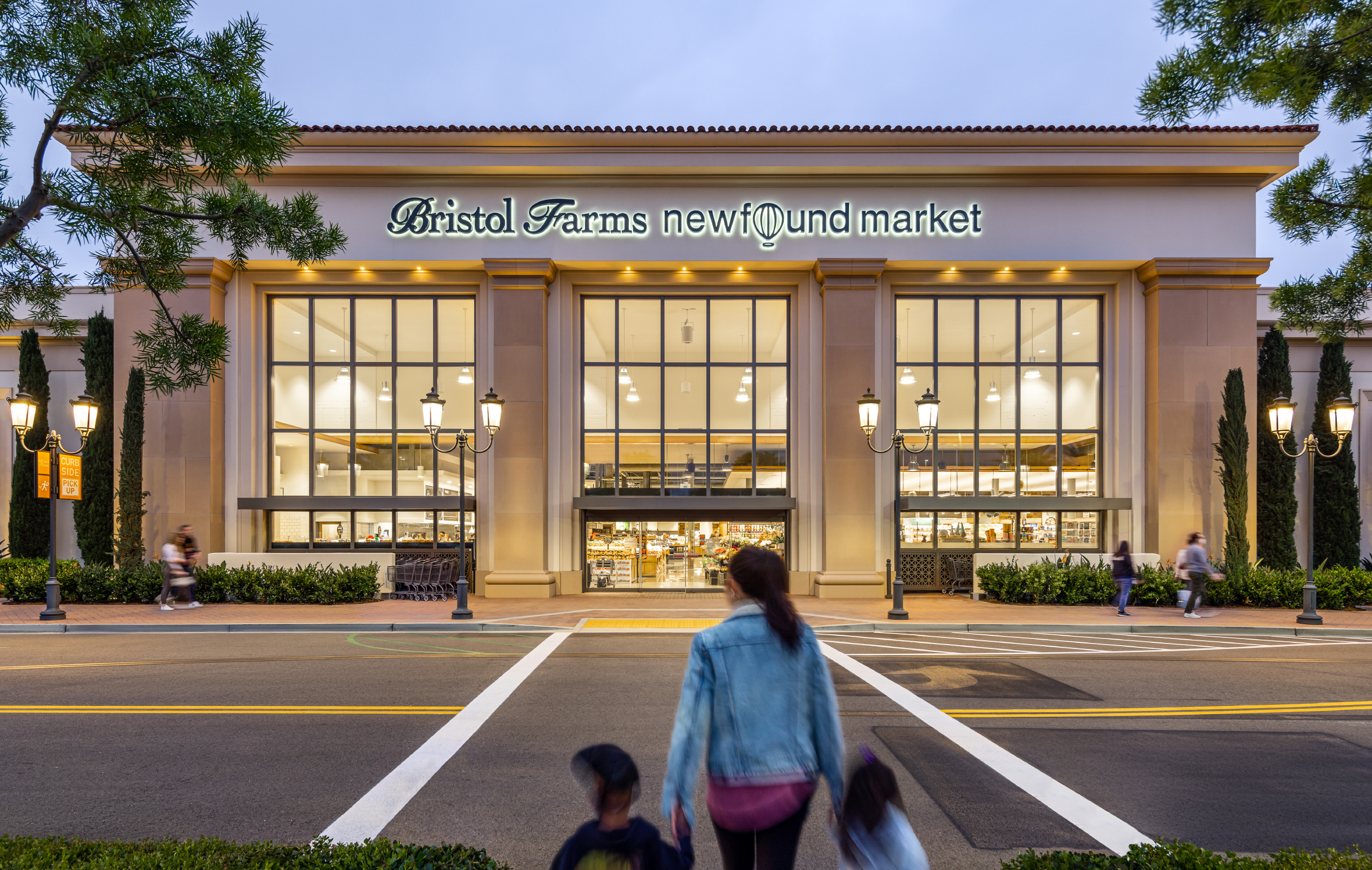
Bristol Farms Newfound Market
Irvine, CA
The space housing this store was formerly occupied by two separate tenants – one large, one smaller – on the perimeter of the Irvine Spectrum Center, an upscale shopping/dining/entertainment complex in SoCal. Despite that adjacency, the smaller of the spaces’ floors was 30 inches lower than that of its neighbor. In addition, Bristol wanted two different entry doors – one from an adjoining parking lot for the grocery part of the project, and a separate one for an ambitious restaurant/food hall component being created by a culinary expert formerly with Lettuce Entertain You Restaurants.
Advertisement
In the end, the design team creating the 34,000-square-foot “groceraunt” turned those challenges to their advantage.
Advertisement
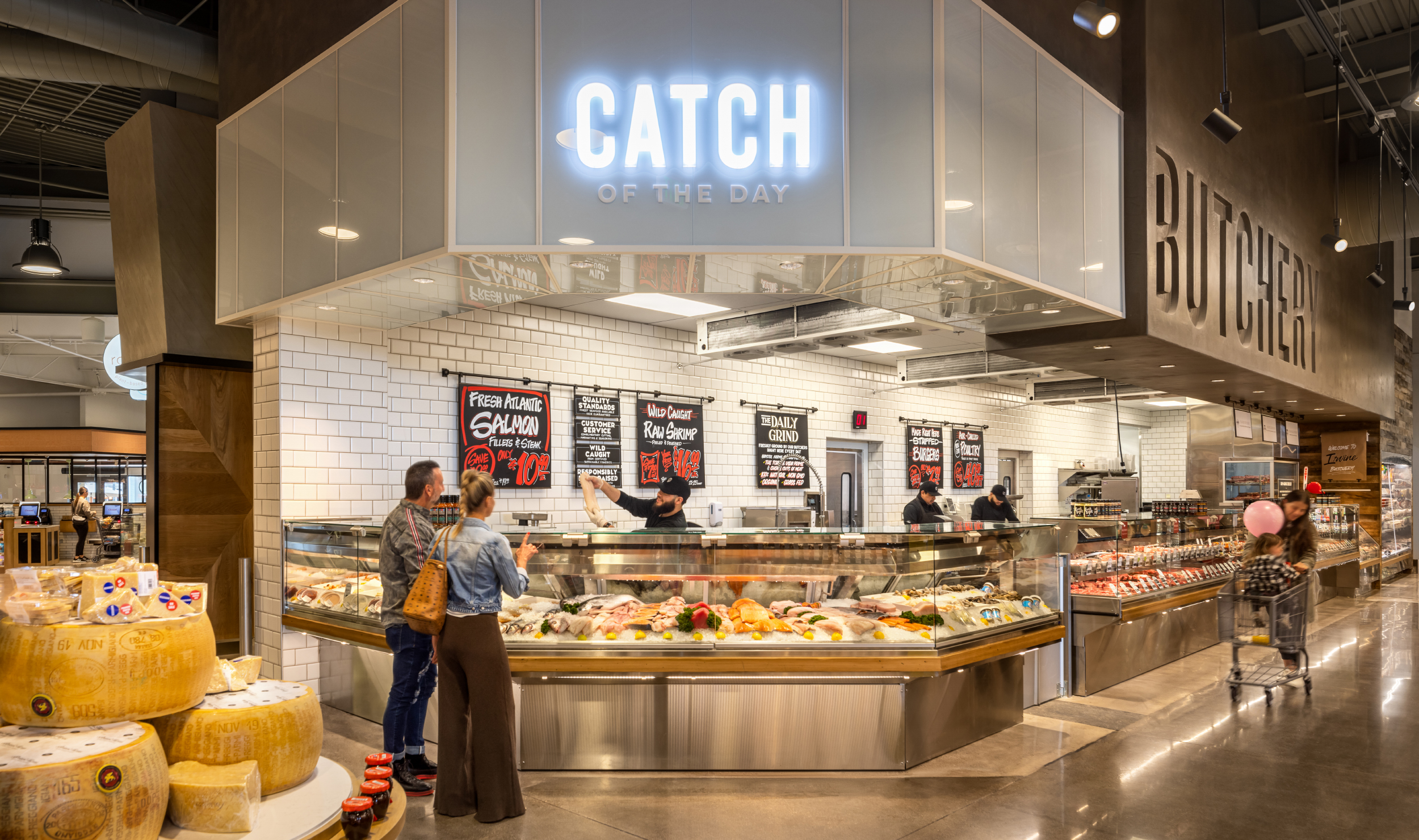
“The elevation change provided a layered entry approach experience through the food hall part of the store to the grocery,” says Kevin Foster O’Donnell, Principal of Thread Collaborative (Los Angeles), which worked with design firm Bishop Pass (Los Angeles) on the project. “We were able to organize the plan so that the parking field front door catered to customers visiting primarily for groceries, and the mall food court front door is for customers visiting the store’s food hall.”
With those logistical hurdles overcome, the team set about creating an immersive environment that O’Donnell describes as one in which “the personality of Alice Waters, the venerated mindful gourmet, meets the personality of Anthony Bourdain, the quintessential adventurous foodie.”
“That translates into a modern farmhouse vibe that’s both rough and smooth, evoking rustic elements that have been shaped and detailed through a modern lens,” says O’Donnell. “The result is a new concept store that leverages the best aspects of the high-quality gourmet products and services typical of Bristol Farms with new, elevated prepared-food offerings and culinary experiences.”
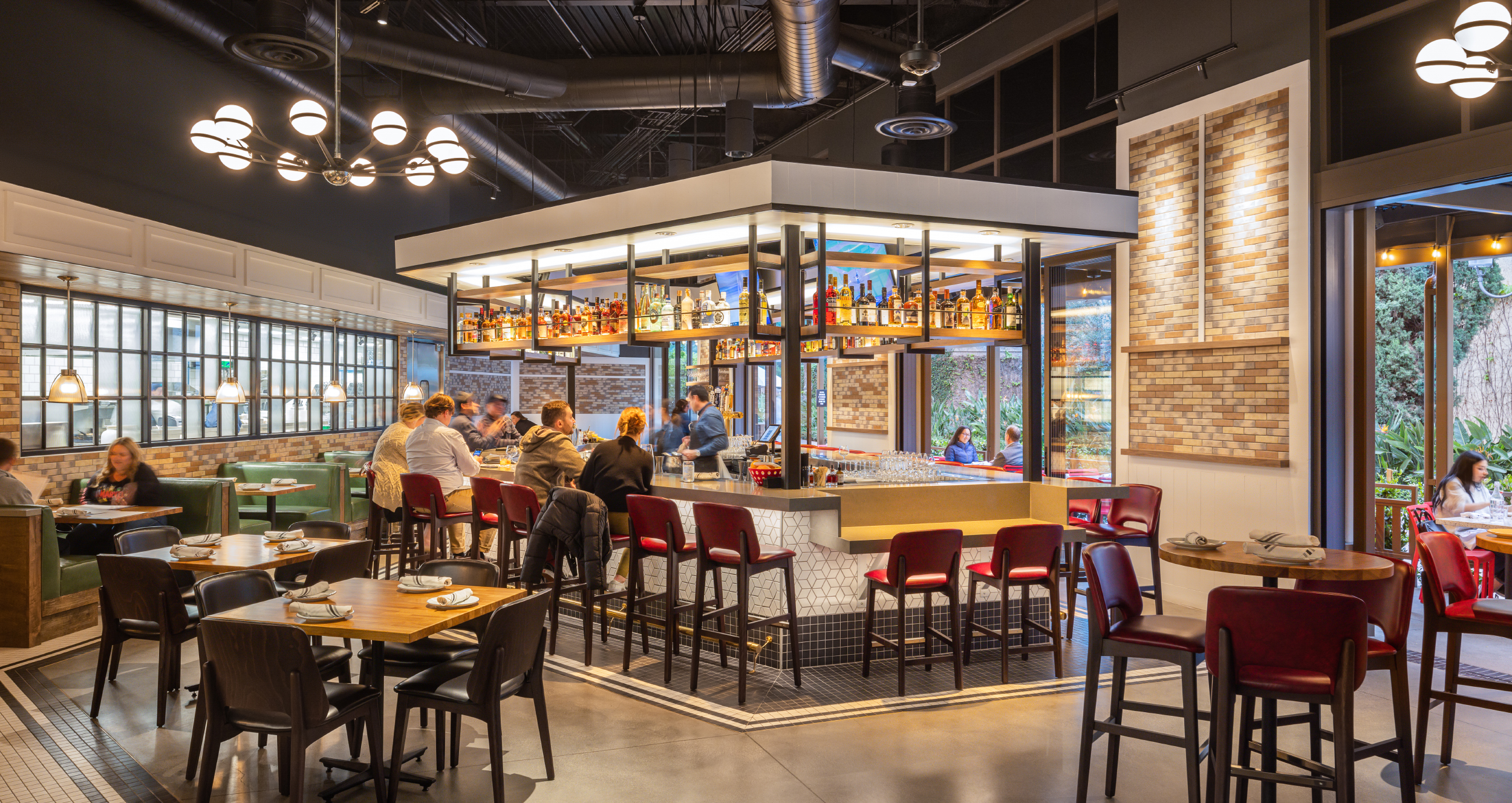 ABOVE: With a “modern farmhouse vibe,” Bristol Farms Newfound Market in Irvine, Calif., features a rugged yet refined aesthetic. 📷 Lawrence Anderson Studio
ABOVE: With a “modern farmhouse vibe,” Bristol Farms Newfound Market in Irvine, Calif., features a rugged yet refined aesthetic. 📷 Lawrence Anderson Studio
Advertisement
As with virtually any project to have been completed in the past couple of years, this one was affected by the pandemic.
“The biggest impacts occurred with the newest elements – those related to its elevated prepared food and culinary experiences,” says O’Donnell. “Early designs allowed customers more direct contact with food. But that had to change in response to the pandemic.
“Self-serve food scenarios were converted to service, which altered the originally intended customer experience. However, since opening, plans have been made to convert the existing casework back to the original self-serve experience.”
Advertisement
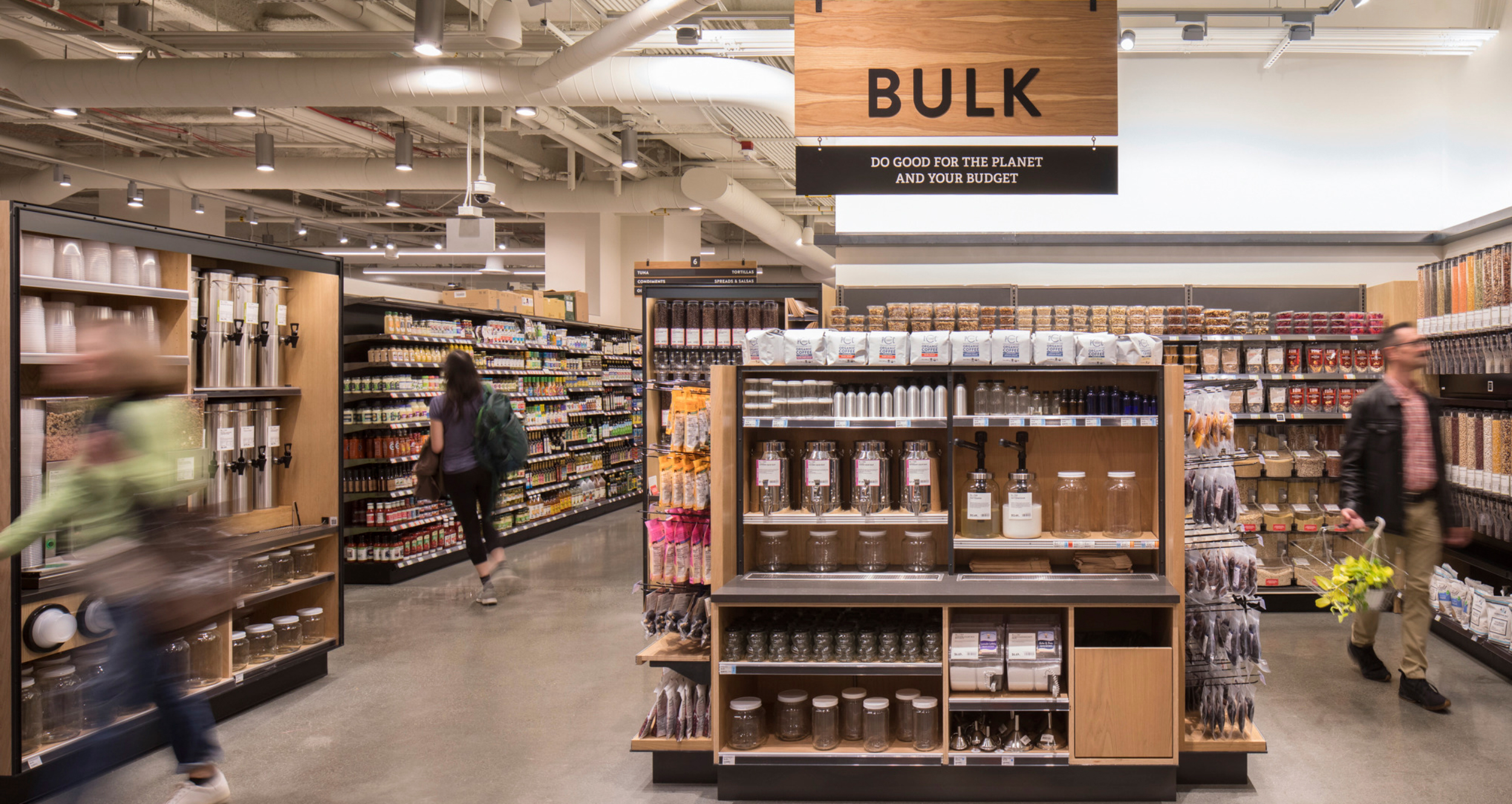 Sustainable, non-toxic building materials comprise PCC Community Markets’ latest concept in downtown Seattle. 📷 Lara Swimmer Photography
Sustainable, non-toxic building materials comprise PCC Community Markets’ latest concept in downtown Seattle. 📷 Lara Swimmer Photography
PCC Community Markets
Downtown Seattle
Founded in Seattle in 1953 as the Puget Consumers Co-op, the organization has evolved into PCC Community Markets, a certified organic retailer and the nation’s largest community-owned food market with an active membership of more than 100,000. PCC operates 16 stores in the Puget Sound area, including its latest, a 17,500-square-foot location on the ground floor of the new Rainier Square Tower in downtown Seattle. Overseeing the design was MG2 (Seattle), which had previously designed two other stores for the co-op.
As was the case with the Bristol Farms locale, PCC’s move into an existing-but-vacant space had its plusses and minuses for the designers.
Advertisement
“For example, natural light is a big part of the PCC experience, and with only one source on the street level – the front windows – we needed to maximize its impact,” says MG2 Principal Peter Stocker. “To take advantage of that light, we placed a seating area directly inside the main entrance featuring Native American artwork.”
That work consists of carvings by Andrea M. Wilbur-Sigo, a member of the area’s Squaxin Island Tribe. Her installation, titled “The Way of Life,” conveys the connection between people and the environment.
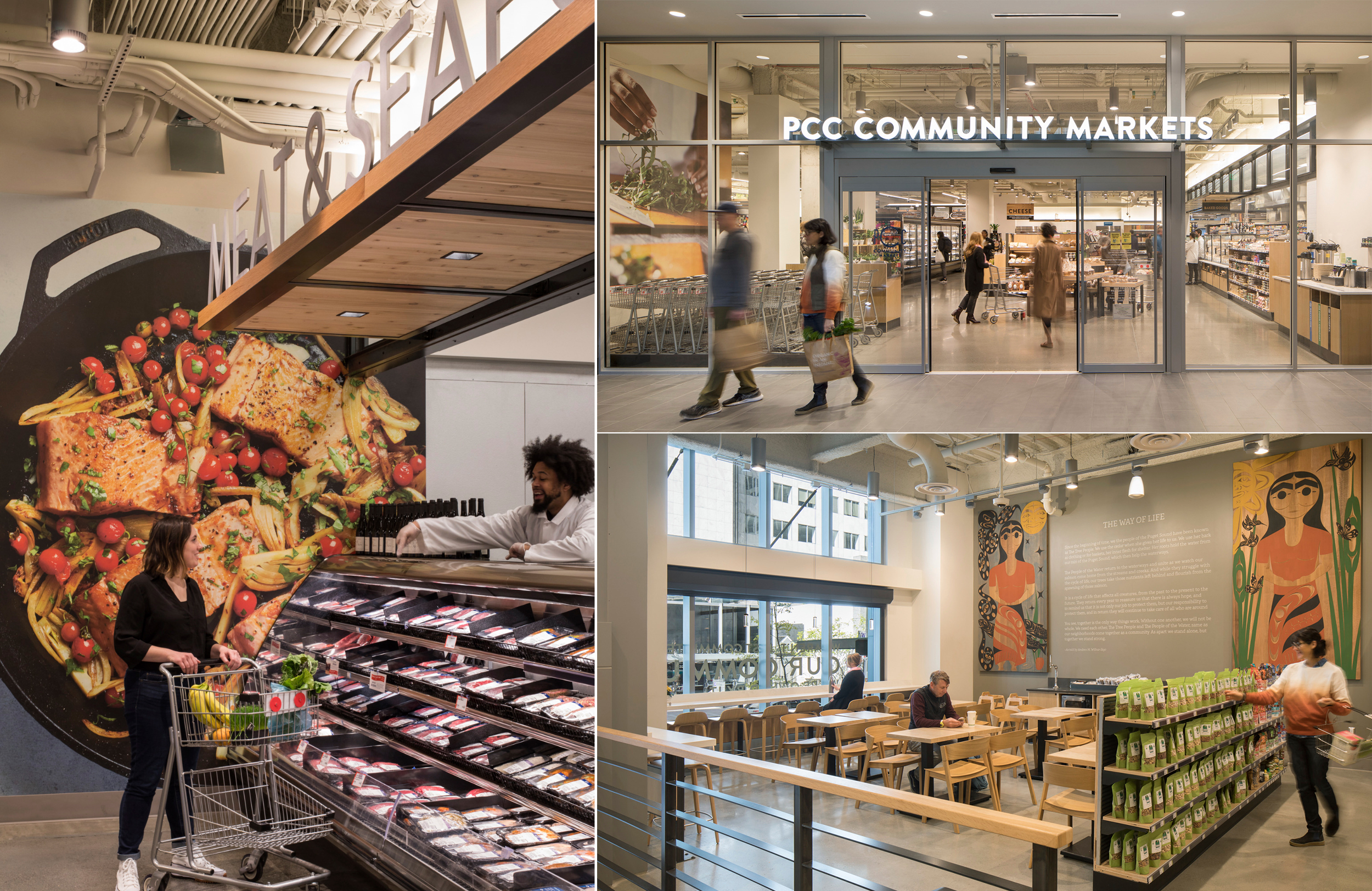 THIS PAGE: With a growing membership of more than 100,000, this is just one of 16 stores the grocer operates in the area surrounding Puget Sound in Washington.
THIS PAGE: With a growing membership of more than 100,000, this is just one of 16 stores the grocer operates in the area surrounding Puget Sound in Washington.
Wilbur-Sigo’s work, Stocker notes, is also an important component of the requirements of the Living Building Challenge (LBC) Petal-Certification by the International Living Future Institute (ILFI), widely regarded as the world’s most rigorous green building standard. (The downtown store is PCC’s fourth store to gain this stringent certification.)
Other eco-friendly elements at the Downtown PCC include sustainably sourced, non-toxic building materials, reclaimed materials from other PCC stores, and high-efficiency electrical and plumbing systems.
As mentioned in the previous case study, virtually all projects that have come online during and after the pandemic have been impacted in some way, and the PCC store is no exception.
“As the pandemic has waned, downtown Seattle has remained under capacity, with lower-than-planned occupancy,” says Stocker. “Despite that, the latest PCC has become what it intended all along: a hub for groceries and high-quality prepared and specialty foods. Workers and residents willingly climb the steep blocks leading up to 4th Avenue just to go to PCC.”
Who knows? Given their unique designs, both brands detailed above just might be memorable enough to make their way onto the Yelp roster.
PHOTO GALLERY (22 IMAGES)
📷 Lawrence Anderson Studio | Lara Swimmer Photography
Advertisement
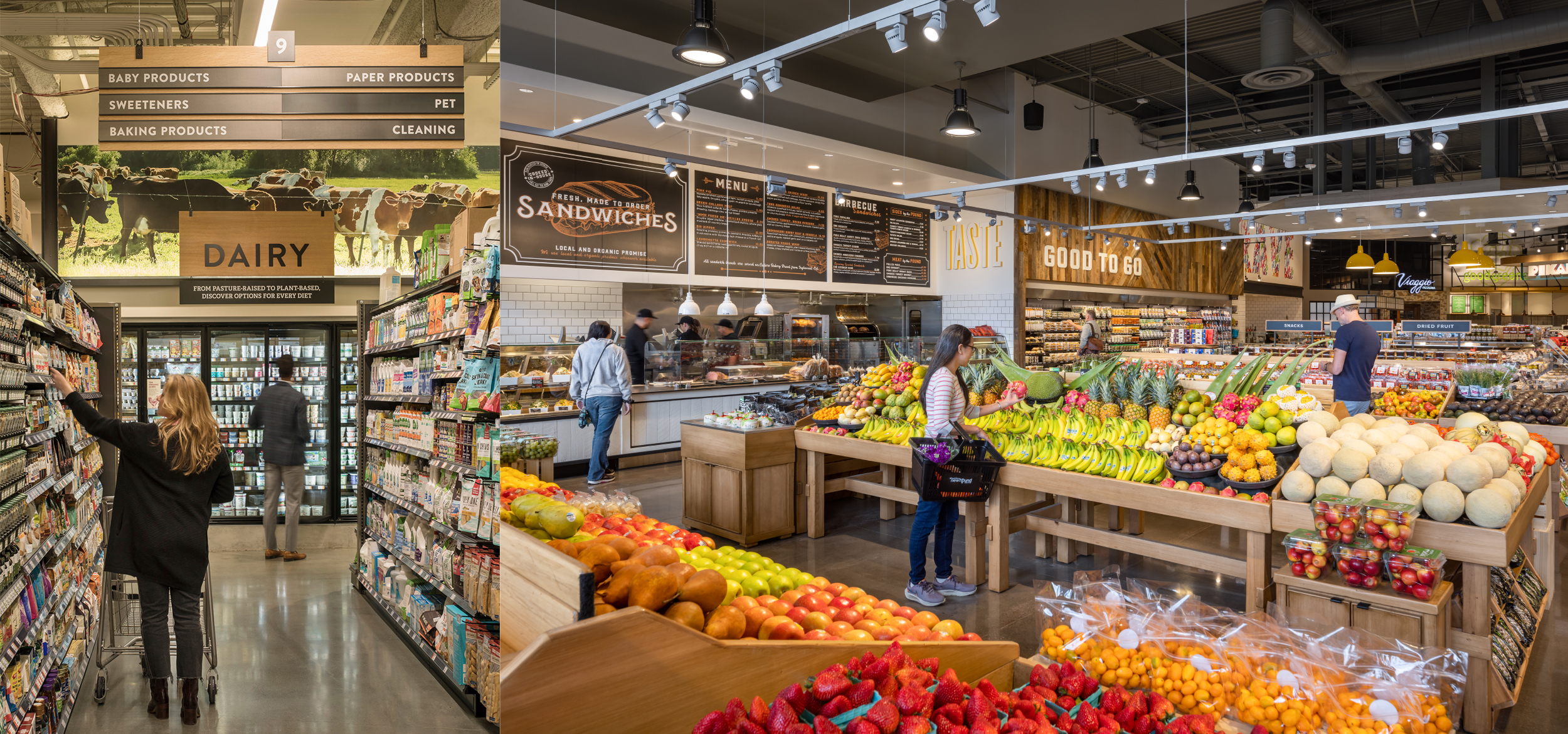

 Photo Gallery2 weeks ago
Photo Gallery2 weeks ago
 Headlines5 days ago
Headlines5 days ago
 Headlines1 week ago
Headlines1 week ago
 Headlines2 weeks ago
Headlines2 weeks ago
 Headlines2 weeks ago
Headlines2 weeks ago
 Headlines4 days ago
Headlines4 days ago
 Headlines3 days ago
Headlines3 days ago
 Designer Dozen1 week ago
Designer Dozen1 week ago




 Sustainable, non-toxic building materials comprise PCC Community Markets’ latest concept in downtown Seattle. 📷 Lara Swimmer Photography
Sustainable, non-toxic building materials comprise PCC Community Markets’ latest concept in downtown Seattle. 📷 Lara Swimmer Photography 
